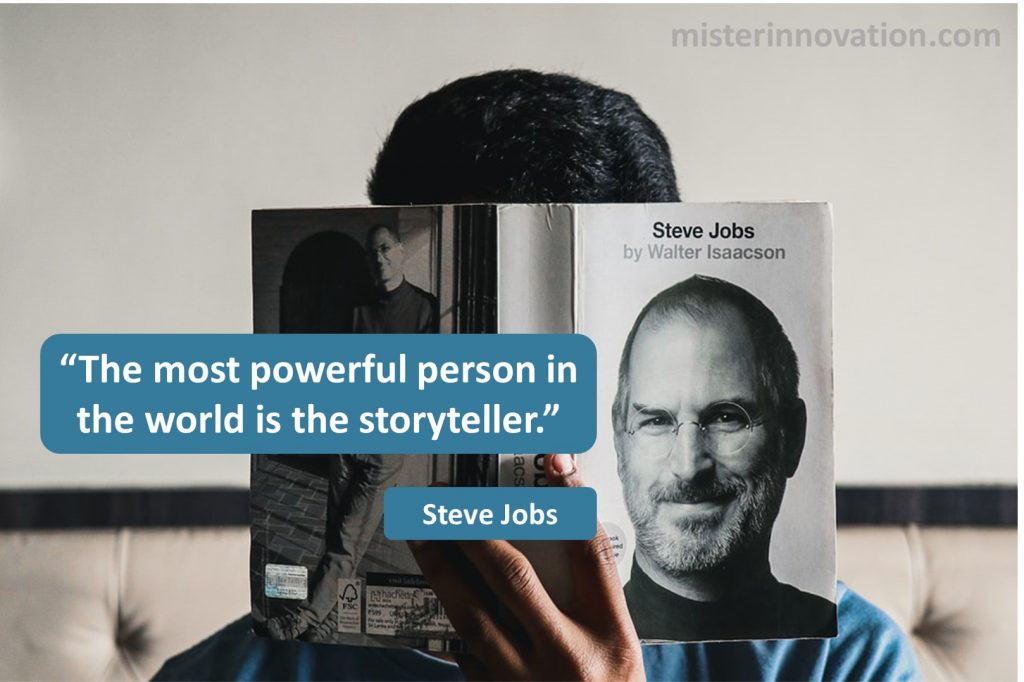The Art of Storytelling

GUEST POST from Art Inteligencia
In today’s fast-paced, technology-driven world, businesses are constantly striving to stay ahead of the curve and foster innovation. While countless tools and strategies exist to inspire creativity, one often overlooked yet immensely powerful approach lies in the art of storytelling. Harnessing the strength of narratives, companies can inspire their teams, explore new perspectives, and drive innovation. This article explores how storytelling can flourish as a catalyst for innovation, supported by two compelling case studies that highlight its effectiveness.
Case Study 1: Pixar Animation Studios
Pixar Animation Studios, renowned for its groundbreaking computer-animated films, has become a household name for captivating storytelling. Pixar understands that innovation often thrives when traditional boundaries are challenged, and they have used storytelling as a means to consistently inspire creativity.
In the case of Pixar’s film “Toy Story,” the initial concept faced significant skepticism. The concept of toys coming to life seemed unusual, but the storytelling approach taken by Pixar captured the hearts and imaginations of both adults and children. By creating relatable characters, building emotional connections, and weaving an engaging narrative, Pixar transformed a seemingly bizarre concept into a groundbreaking and hugely successful film.
This case study emphasizes that storytelling can help organizations push the boundaries of imagination, enabling them to overcome initial reservations. By creating a compelling and relatable narrative, companies can promote a culture that encourages their teams to challenge conventional thinking and embrace innovation.
Case Study 2: Nike
Nike, one of the world’s leading athletic brands, has long recognized the power of storytelling in fostering innovation. Their “Just Do It” campaign, introduced in 1988, revolutionized sports advertising and inspired countless individuals to push their limits. The unifying message of perseverance and determination resonated with people from all walks of life, propelling Nike to the forefront of athletic apparel.
A notable example of Nike’s use of storytelling comes from their collaboration with Colin Kaepernick, the former NFL player known for his peaceful protests against racial injustice. In 2018, Nike launched a controversial campaign featuring Kaepernick, titled “Believe in something. Even if it means sacrificing everything.” This narrative-driven advertisement sparked conversation and stirred emotions worldwide. By effectively utilizing storytelling, Nike took a bold stance and inspired innovation by championing social values and sparking important conversations.
This case study demonstrates the power of storytelling to prompt innovation not only within a company but also on a societal level. By weaving narratives that highlight important issues, companies can drive conversations, challenge norms, and inspire change.
Key Takeaways:
1. Stories have the power to transform unconventional ideas into innovative breakthroughs. By crafting engaging narratives, organizations can overcome initial skepticism and foster a culture that embraces creative thinking.
2. Well-crafted stories can act as a catalyst for change and inspire innovation on both individual and societal levels. Companies that use storytelling to embrace and promote important values can challenge the status quo and shape the future.
Conclusion
The art of storytelling is a potent tool that can inspire innovation within organizations. By crafting narratives that captivate, brands can create a culture that encourages their teams to think differently, challenge existing norms, and push the boundaries of creativity. Pixar Animation Studios and Nike demonstrate how storytelling can transform bold ideas into groundbreaking achievements and highlight important social issues. Embracing the power of storytelling has the potential to unlock innovative thinking and drive meaningful change in the corporate landscape.
Bottom line: Futurology is not fortune telling. Futurists use a scientific approach to create their deliverables, but a methodology and tools like those in FutureHacking™ can empower anyone to engage in futurology themselves.
Image credit: misterinnovation.com
![]() Sign up here to get Human-Centered Change & Innovation Weekly delivered to your inbox every week.
Sign up here to get Human-Centered Change & Innovation Weekly delivered to your inbox every week.